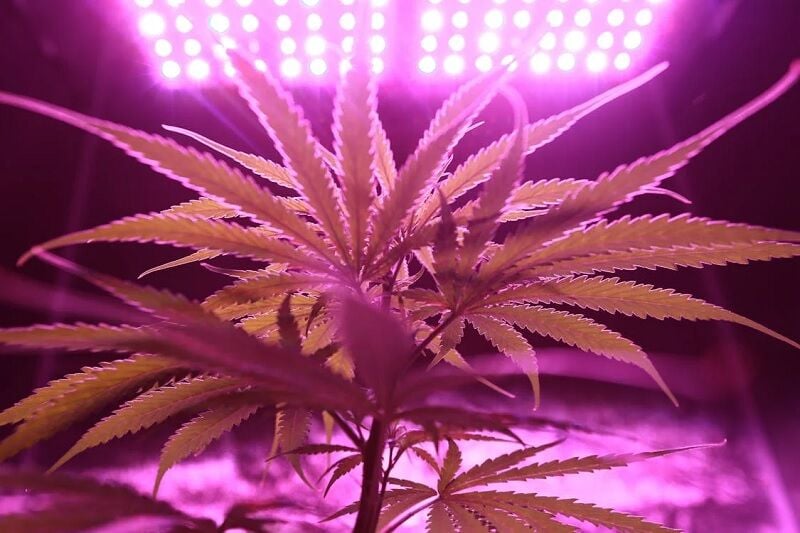Practical insights to use cannabis in palliative care

At its heart, palliative care aims to be a beacon of hope, reducing suffering and significantly improving the quality of life for patients facing critical or end-of-life challenges. The latest buzz comes from a systematic review published in the Journal of Pain and Symptom Management, which illuminates how cannabis might just be the hero we’ve been waiting for in achieving these noble goals. This revelation is stirring up excitement and optimism, suggesting cannabis holds the power not only to offer solace but also to uplift overall well-being.
As we embark on this thrilling exploration through the landscape of palliative care options, grasping the pivotal role cannabis could play becomes paramount. This journey isn’t merely about discovering its potential perks; it’s about boldly confronting and dispelling doubts that loom around its usage. Armed with clarity, knowledge, and unwavering enthusiasm, let’s plunge into what recent studies unveil about cannabis’ place in palliative care settings—ready to change lives for the better!
The benefits of cannabis in palliative care

Pain management
Managing pain is super important in palliative care, and guess what? Cannabis is stepping up to the plate. There was this study in Thailand where they found out that cannabis helped half of the participants cut down on some serious pain without always needing opioids. That’s thanks to components like THC and CBD in cannabis which chat with the body’s pain sensors to dial down discomfort. Pretty cool, right?
Nausea and vomiting relief
No one likes feeling sick all the time, especially when going through treatments like chemotherapy. Here’s where cannabis comes into play again, with its knack for calming queasiness and preventing vomiting by poking at certain brain areas responsible for these yucky feelings. This not only makes patients feel loads better but also helps them eat well and stay stronger.
Improved sleep quality
Getting good sleep can be a game-changer in healing and staying positive; however, snoozing soundly isn’t always easy for everyone getting palliative care. Enter cannabis! Studies show it really helps folks find their way to dreamland more easily and stay there longer over three months of treatment by interacting with our internal endocannabinoid system. Better sleep means less pain during waking hours, steadier moods, and an overall boost in coping abilities.
As we keep exploring new ways to make palliative care even better, including understanding how cannabis fits into the picture becomes crucial. While it’s important to weigh any potential downsides carefully, the perks we’ve talked about are pretty promising for some patients considering integrating cannabis into their care plan alongside advice from their healthcare team – making those conversations about options a bit easier to have.
Risks and considerations
When considering cannabis as part of palliative care, you must weigh both the potential benefits and drawbacks. This section delves into the crucial aspects of legal implications and potential side effects to help you make an informed decision.
Legal implications
Before integrating cannabis into your palliative care regimen, understanding the legal landscape is vital. Laws around cannabis for medical use vary significantly from one jurisdiction to another. **In Thailand**, for example, the use of medical cannabis has seen significant legal changes in recent years, aiming to facilitate its use in healthcare, including palliative care. However, the regulations around its use are stringent, with specific requirements for prescriptions and dispensing. Ensure you’re fully informed about the legal status of medical cannabis in your location and comply with all regulations to avoid legal repercussions.
Potential side effects
While cannabis can offer palliative benefits, like pain relief and nausea control, it’s crucial to be aware of its potential side effects. THC, the psychoactive component of cannabis, can cause side effects such as:
Dizziness
Cognitive impairments
Anxiety
Sedation
Especially at higher doses, these effects can impact the quality of life and overall well-being. Starting with low doses and gradually titrating up can help mitigate some of these side effects, allowing you to find a balance that maintains relief while minimizing discomfort. Remember, the goal of palliative care is to improve quality of life, so closely monitor how cannabis affects you and adjust usage as necessary with the guidance of your healthcare provider.
Administering cannabis in palliative care

Different methods of consumption
When considering cannabis in palliative care, understanding the diverse methods of consumption is vital. Inhalation, including smoking and vaporisation, is a popular choice. It offers swift relief, as the effects are felt within minutes. However, for long-term palliative care patients, non-combustive methods like vaporisation may be preferable to reduce the risk of respiratory issues. Oral administration, such as cannabis oil drops, provides a more controlled dosage and a longer-lasting effect, crucial for managing chronic symptoms. Topicals can be effective for localised pain without psychoactive effects. Each method has its advantages, depending on your symptoms and personal health goals.
Dosage considerations
Finding the right dosage of cannabis is a critical yet challenging aspect of palliative care. Start low and go slow is the golden rule. Begin with a minimal dose and gradually increase until you find the most effective dose that minimises side effects. It’s imperative to consult with healthcare providers experienced in cannabis use in palliative care settings. They can offer guidance based on the latest research and clinical evidence, ensuring a balance is struck between efficacy and quality of life. Remember, the goal is to alleviate symptoms and enhance comfort, making dosage personalisation key.
Dosage varies significantly among individuals due to factors like body weight, tolerance levels, and the specific palliative condition being treated. For example, pain and nausea might require different dosages or cannabis strains. Regular monitoring and adjusting the dosage under professional supervision ensure the treatment remains effective over time, adapting to changing health conditions or tolerance levels.
Considering the above-shared details, You can also check out, Is cannabis the answer to Chronic Pain, The shift towards cannabis for pain relief isn’t just about seeking new treatments; it’s about the search for safer, potentially less addictive options. Research suggests that cannabis could play a crucial role in pain management, yet there’s still much to learn about its effectiveness and possible side effects. As someone who’s always on the lookout for effective pain solutions, you will intrigued by the possibilities that cannabis presents.
Latest Thailand News
Follow The Thaiger on Google News:


























